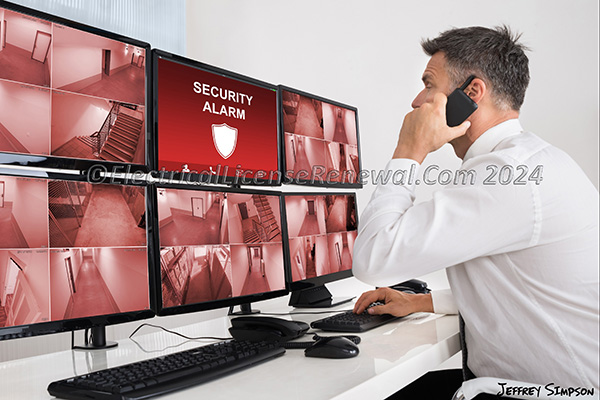Video Verification Systems.

Video verification systems are an advanced technology that enhances the reliability and effectiveness of security alarm systems. These systems integrate video cameras with alarm sensors to provide real-time visual confirmation of alarm events. When an alarm is triggered, the video verification system captures and transmits video footage to a monitoring center or the property owner, allowing for immediate assessment of the situation.
NFPA 731 Section 3.3.32 defines a Video Surveillance System as a video system in which an analog or digital video signal travels from the camera to video monitoring stations at the protected premises.
The primary advantage of video verification is its ability to reduce false alarms. Traditional alarm systems rely solely on sensors, which can be triggered by non-emergency events such as moving pets, environmental changes, or user error. Video verification adds a layer of confirmation by providing visual evidence, allowing operators to distinguish between real threats and false alarms. This reduces unnecessary dispatches of emergency services and helps maintain their readiness for actual emergencies.
Video verification systems typically include features such as motion detection, night vision, and remote access. Motion detection cameras can be programmed to record only when movement is detected, reducing the amount of footage to review. Night vision capabilities ensure that video verification is effective even in low-light conditions. Remote access allows property owners and monitoring personnel to view live and recorded footage from anywhere, enhancing situational awareness and response.
Implementing video verification systems involves careful planning and integration with existing security systems. Cameras should be strategically placed to cover key areas and potential entry points, ensuring comprehensive coverage. Integration with the alarm control panel (FACP) and monitoring center ensures that video feeds are available immediately when an alarm is triggered.
Regular maintenance and testing of video verification systems are essential to ensure their reliability. This includes cleaning camera lenses, checking the functionality of motion detection and night vision features, and verifying the quality of recorded footage. Training for monitoring personnel on how to effectively use and interpret video verification is also crucial.
By incorporating video verification into security alarm systems, installers can enhance the accuracy of alarm responses, reduce false alarms, and improve the overall security of properties.